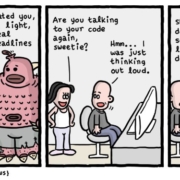Anyone who is acquainted with the concept of iOS app development knows that testing an app is a crucial part of the development process. However, many people don’t know about an especially important subset of testing — beta testing. Also referred to as end-user testing, or pre-release testing, or user acceptance testing (UAT), beta testing involves the product being tried out by a small section of the target audience. At this stage, apps undergo real-world testing, and the early users’ experiences are analyzed to make essential changes before the app is added to the App Store.
While several mediums enable beta testing, iOS apps are known to be quite complicated. There is, however, one alternative that has proven to be quite handy: TestFlight. Launched in 2011, it does away with the inconvenience that accompanies distribution and management of beta builds. It has this ability to ease the entire process to a great extent that led to Apple integrating TestFlight into App Store Connect.
Source de l’article sur DZONE










